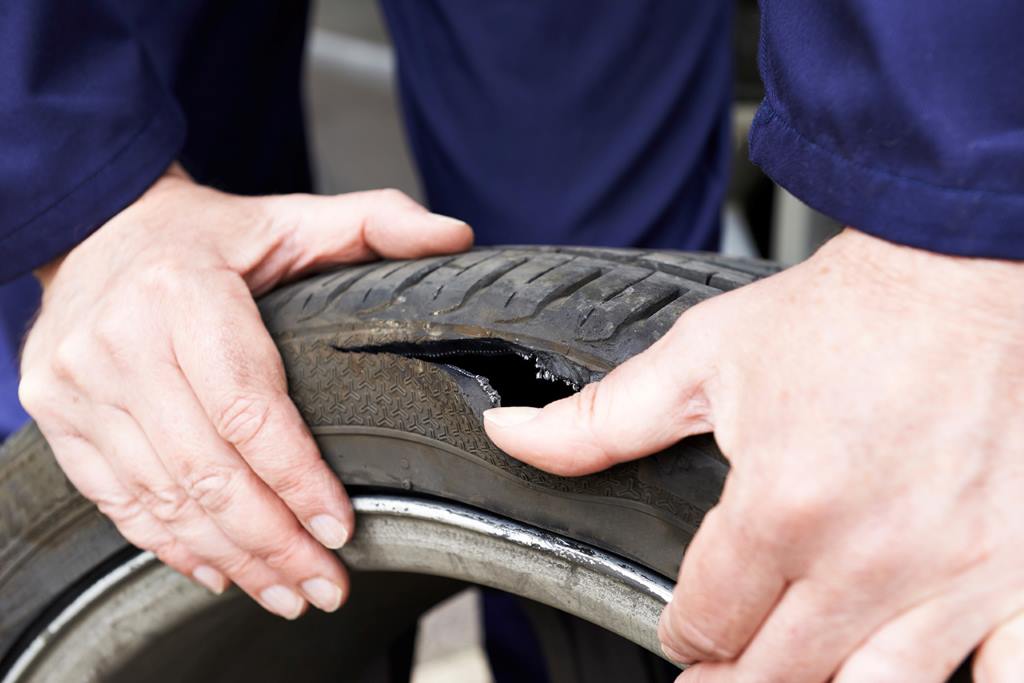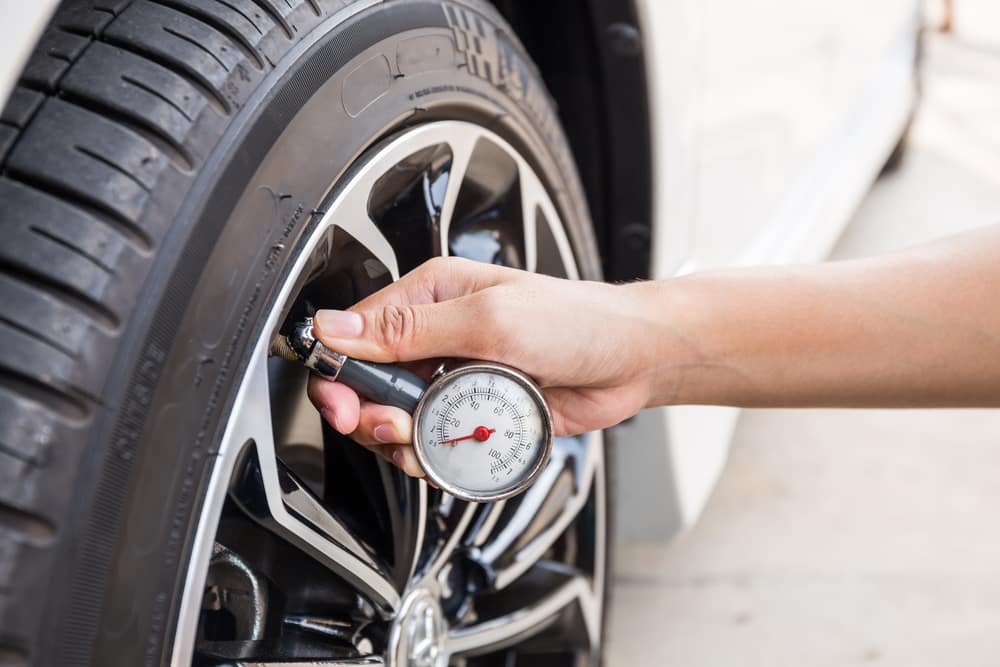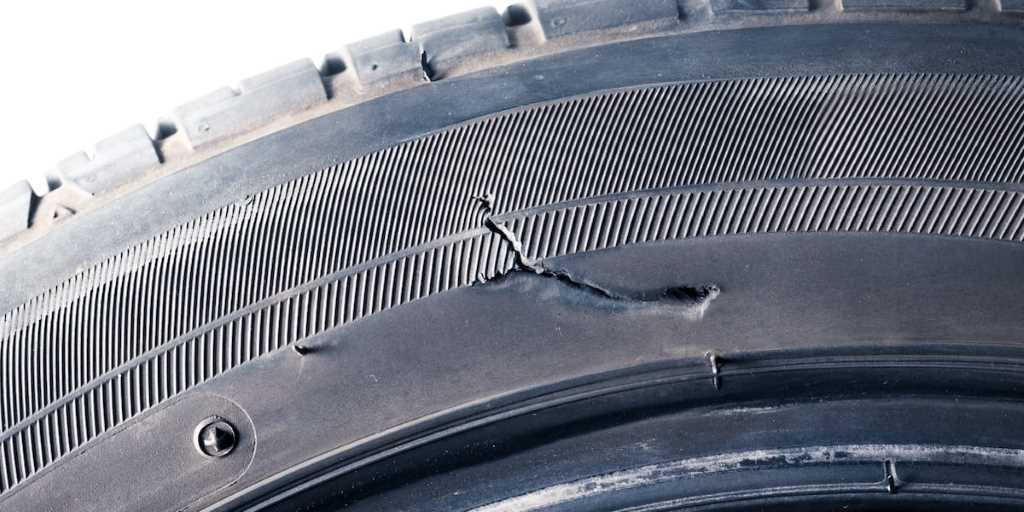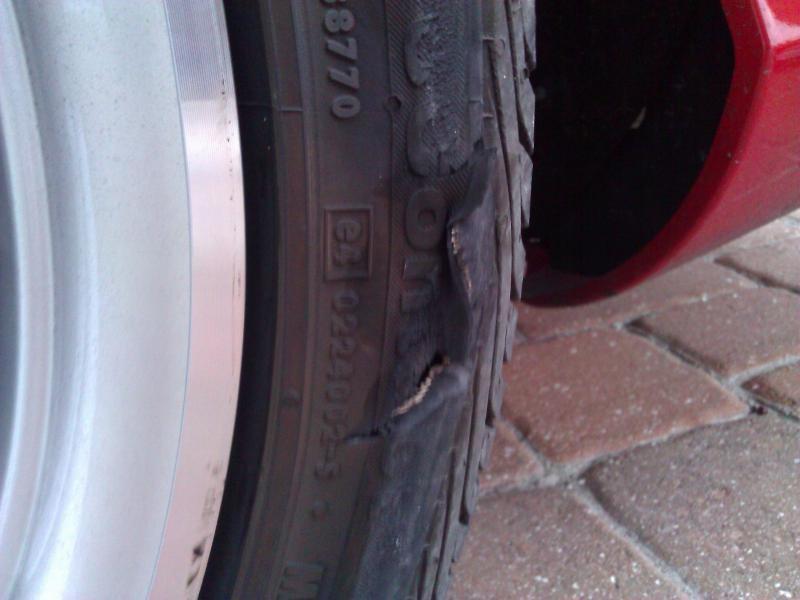Sidewall tire repair is a tricky business and can leave you with serious safety hazards if not taken care of properly.
The job requires professional skill, and even that is not even the most secure process as around 88% of all tire repairs are done inaccurately, according to the Rubber Manufacturers Association (RMA).
The statistic is alarming, but you are safe if you avoid those ‘quick fix’ cheap solutions and choose a repair shop that adheres strictly to the latest industry guidelines.
Any tire repair should include a thorough inspection of the damaged tire because usually tire sidewall damage happens when a tire runs flat. So, it’s impossible to detect the sidewall damage if you don’t remove it from the wheel during the inspection.
Contents
Is It Safe To Do A Sidewall Tire Repair?
Experts often advise not to repair the damage in the sidewall of a tire because it’s too risky. The sidewall functions differently than other areas of a tire. It endures relatively more strains because it moves in multiple directions.
So, the fixing of a tire sidewall is a temporary solution because experts say the chance is higher for the tire to break or explode eventually.
Tire Sidewall Repair: How To Effectively Do It?
Experts don’t consider sidewall tire repair to be reliable or effective because it’s not a permanent solution. However, professional mechanics can still adopt the following measures:

Giving a boot fix
A boot fix means repairing tires in sidewall by placing a large piece of rubber inside it. The rubber piece protects the tire’s inside tube.
However, the solution is temporary as the tire will be exposed to damage if the boot moves out of place.
Using a secondhand tire
It’s a cost-effective solution for replacing a worn tire sidewall. However, you can’t rely on the quality of an old tire as its lifespan can already be overdue. Using a new tire is the best bet for safety and durability.
Vulcanizing the damaged area
Some expert mechanics and larger repair shops can do vulcanizing to repair sidewall of tire damage.
The process involves sealing the hole by grinding out some rubber from the inside of the tire. Nevertheless, the solution isn’t permanent and costs you lots of money.
Step-by-step tutorials
Repairing a tire sidewall is a delicate process that requires attention to detail and proper tools. However, it’s important to note that sidewall repairs are not recommended by many tire manufacturers and professionals due to safety concerns.
Tire sidewalls are critical for the structural integrity of the tire, and any damage to them can compromise the tire’s safety. It is generally recommended to replace a tire with sidewall damage rather than attempting a repair.

However, if you find yourself in an emergency situation and need to perform a temporary repair to reach the nearest service station, follow these steps carefully:
Materials Needed:
- Tire repair kit with a plug and patches
- Tire jack and lug wrench
- Rubber cement
- Air compressor or tire inflator
Here are the steps you can follow:
- Safety First: Find a safe location away from traffic to perform the repair. Turn on your hazard lights, engage the parking brake, and use wheel chocks to prevent the vehicle from rolling.
- Remove the Tire: Use the tire jack to lift the vehicle off the ground, and then use the lug wrench to remove the damaged tire from the vehicle.
Inspect the Sidewall
Examine the sidewall carefully for any punctures, cuts, or tears. If the sidewall damage is extensive or includes any bulges or bubbles, do not attempt to repair the tire. Replace it with a spare or call for roadside assistance.
Clean the Area
If the sidewall damage is minor and confined to a small puncture, use a tire rasp or wire brush to clean the area around the damaged spot.
Apply Rubber Cement
Apply a thin layer of rubber cement to the cleaned area to help the plug adhere to the tire.
Insert the Plug
Insert the tire plug into the puncture using a plug insertion tool or kit. Make sure the plug is securely in place and flush with the tire sidewall.
Install a Patch (Optional)
For added reinforcement, you can apply a tire patch to the inside of the sidewall using a patch kit. This step is not recommended for long-term use, but it can provide extra support to reach a nearby service station.
Check Tire Pressure
Use an air compressor or tire inflator to fill the tire to the recommended pressure as indicated in the vehicle’s manual or on the tire sidewall.

Check for Leaks
Spray the repaired area with soapy water and look for bubbles, which indicate air leakage. If bubbles appear, the repair may not be holding, and you should refrain from driving on the repaired tire.
FAQs on Sidewall Tire Repair
-
Can I drive on a tire with sidewall damage?
It is not recommended to drive on a tire with sidewall damage as it compromises the tire’s structural integrity and safety. Replace the damaged tire as soon as possible.
-
Why are sidewall repairs not recommended?
Sidewall repairs are not recommended because the sidewall provides crucial support and stability to the tire. Any damage to the sidewall can lead to tire failure and potential accidents.
-
Can tire sealants or fix-a-flat products repair sidewall damage?
Tire sealants and fix-a-flat products are designed for small punctures in the tire tread, not for sidewall damage. They are not suitable for repairing sidewall issues.
-
What should I do if my tire has sidewall damage?
If your tire has sidewall damage, it is best to replace it with a new tire of the same size and specifications recommended by the vehicle manufacturer.

-
How can I prevent sidewall damage to my tires?
Avoid driving over curbs, potholes, and other road hazards. Maintain proper tire inflation and regularly inspect your tires for signs of damage or wear.
-
Is sidewall damage covered by tire warranties?
Sidewall damage is typically not covered by tire warranties as it is considered non-repairable damage.
-
How often should I inspect my tires for sidewall damage?
Regularly inspect your tires during routine maintenance checks or before long trips. Look for any visible damage, bulges, or cuts on the sidewall.
Remember, while temporary sidewall repairs may be attempted in emergency situations, it is not a permanent solution.
Replace the damaged tire as soon as possible to ensure your safety on the road. Always consult a professional tire technician for proper tire inspection and maintenance.
Stick to Regular Maintenance To Avoid Tire Sidewall Repair
Regular maintenance of your car is the key to staying safe. Check the tires regularly for sidewall damage, especially when you travel long distances.
Besides, a tire can only take two repairs, and even that’s so when the holes are not big, specifically not longer than 4 inches and wider than 1 inch.
So, replacing the tire is the only solution to sidewall tire repair if the damage looks intimidating.



